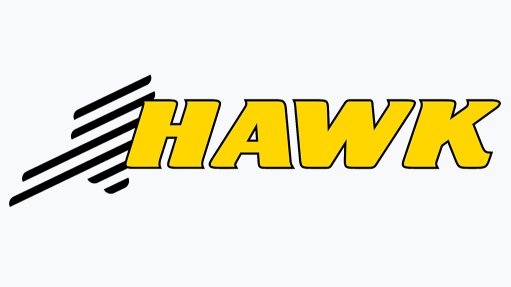From elevated inspections to stock analysis, drones begin making business impact

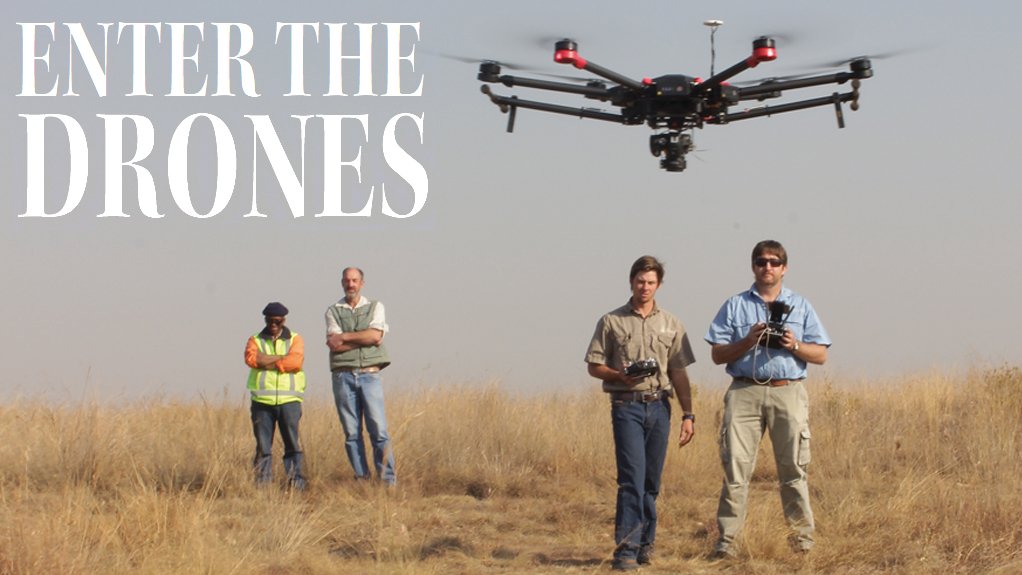
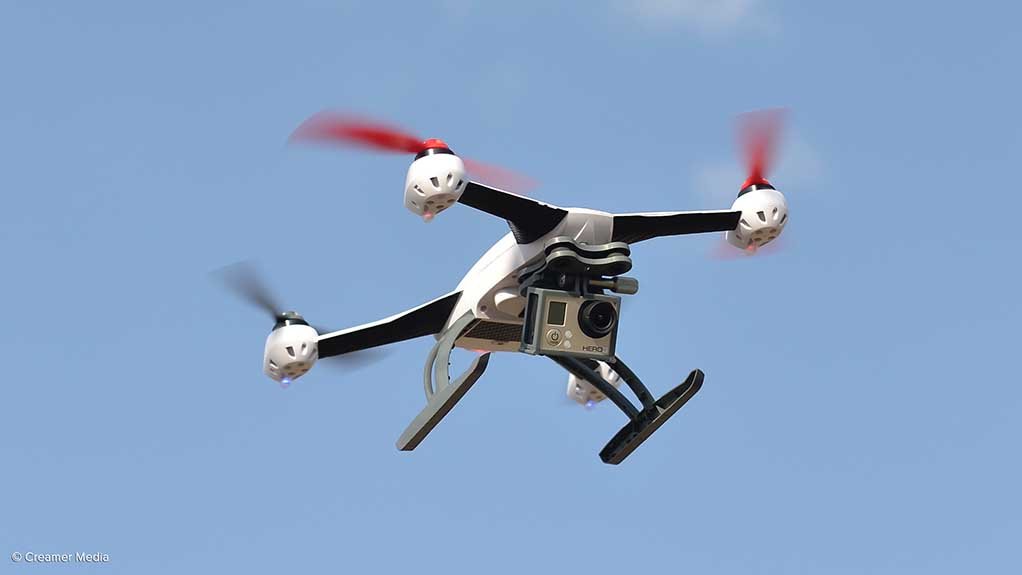
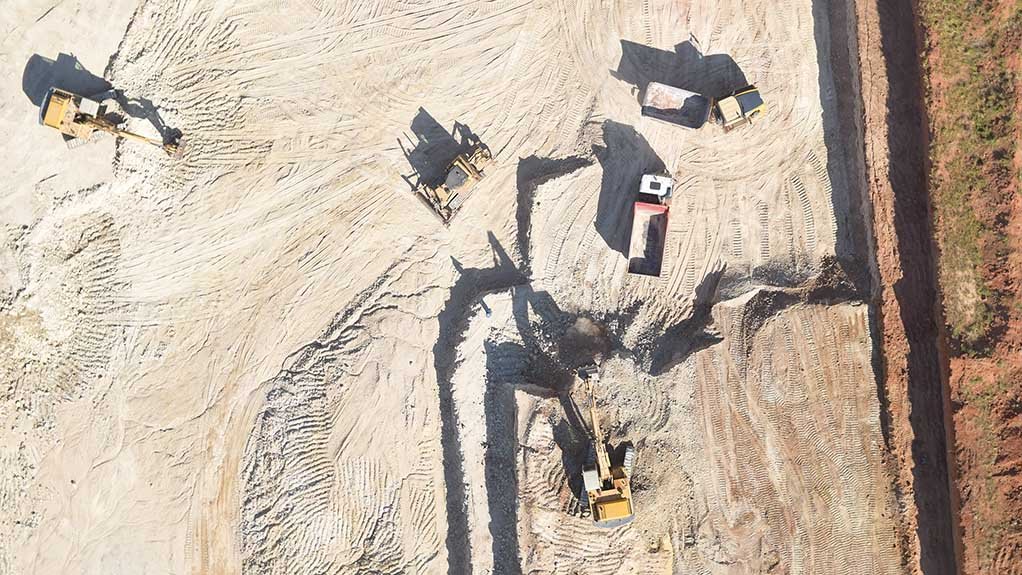
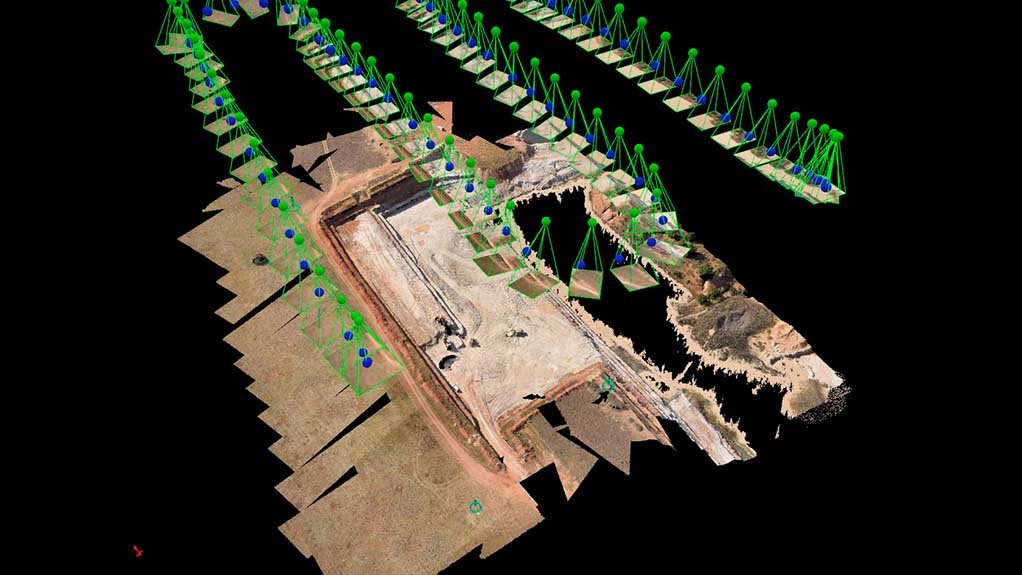
REMOTElY PILOTED AIRCRAFT Rapidly advancing battery technology is resulting in the latest remotely piloted aircraft being able to lift heavier payloads while flying longer, faster and higher
Photo by Dylan Slater
ORTHOPHOTOThe arena of vertical digital photography stands to significantly benefit from remotely piloted aircraft systems, as depicted by this orthophoto from Premier Aviation
LASER TOPOGRAPHYThis laser data point cloud of a mining site depicts the capabilities of aerial mapping using a remotely piloted aircraft system
Remotely piloted aircraft systems (RPASes) have the potential to significantly change the way many industrial, engineering and mining operations are conducted, with the ability to reach difficult-to-access areas and remove people from hazardous situations.
RPASes, which are colloquially known as drones or otherwise referred to as unmanned aerial vehicles (UAVs), also have the potential to dramatically accelerate certain tasks, such as stock analysis and high-level inspection.
Cullinan-based surveying company Premier Aviation, a subsidiary of Premier Mapping, recently launched its RPAS service, after having been fully certified as a commercial RPAS service provider with legal remote pilots.
Prior to launching its RPAS service, Premier Aviation operated its own fleet of light manned aircraft for aerial surveying and mapping purposes, which established several decades’ worth of aerial analysis techniques and expertise. It is these skills and experience that stood the company on an ideal footing to incorporate RPAS operations, with unmanned aircraft, says Premier Aviation mine survey manager Robin Kock.
He tells Engineering News that, before the ability to use RPASes on an industrial scale, elevated inspections of inaccessible areas required the often cumbersome use of ladders, cherry pickers or cranes, thereby bringing in additional costs, delays and safety hazards. However, by using RPASes fitted with inspection and surveying equipment, these tasks can be executed more easily, quickly and safely.
Kock notes that more and more businesses are enquiring about the use of RPASes in various operations because the industry is keen to learn of the capabilities of RPASes technology and to “see the equipment on their sites”.
Interesting requests that are increasingly being made of Premier Aviation include the use of RPASes to document project progress, especially within the construction industry, he says. To document the progress of projects, Premier Aviation uses cameras on its RPASes to compile timelapse imagery as a project progresses. In addition, the built-in global positioning system (GPS) provides the ability for RPASes to document the project from the precise perspective each time, thereby increasing quality control of the end product, and providing the client with precision reporting models to present to project stakeholders.
For most work, Premier Aviation uses high-resolution cameras to produce ‘still’ images of locations. The company also possesses laser scanners to conduct topographical mapping of sites in high definition. Kock tells Engineering News that the definition of mapping with laser scanning can be increased by flying laser scanner- equipped RPASes multiple times over specific areas in an interweaving pattern to increase the accuracy of the model created.
Rapid Development
The RPAS industry is undergoing rapid and unprecedented development currently – a view that is echoed by Premier Aviation, safety and security regulator the South African Civil Aviation Authority (SACAA) and commercial RPAS representative organisation the Commercial Unmanned Aircraft Association of South Africa (Cuaasa).
SACAA spokesperson Subash Devkaran says that rapidly advancing battery technology, resulting in the latest RPASes being able to lift heavier payloads while flying longer, faster and higher, is contributing to these aircraft’s enhanced operational capabilities and greater future potential.
Kock says Premier Aviation acquired one of the latest RPASes earlier this year, boasting a fully laden safe flight time of about eight minutes. However, he points out that the company acquired another RPAS last month boasting a fully laden safe flight time of about 30 minutes, signifying the extent to which battery technology is developing.
He also points out that other RPAS manufacturers are constantly releasing new aircraft with battery lives of more than double the variants they are due to replace.
Further, energy solutions for RPASes are also being developed, such as small turbine jets, solar photovoltaic and hybrid energy sources.
Devkaran notes that RPAS operators are constantly experimenting and finding new ways to use their aircraft for different purposes. As an example, he cites a technological development where a single aircraft is able to count as much stock in a warehouse in two days as a team of 80 people can count in three days.
Meanwhile, Pretoria-based security systems and specialised trailer manufacturer Desert Wolf is developing RPASes for various security applications, such as surveillance, antipoaching, riot control and tracking purposes. The company’s Skunk RPASes employ eight rotors, enabling various payloads of up to 44 kg, as well as the ability to be outfitted with paintball guns, strobe lights and loudspeakers as a riot control measure.
Further, computer-aided design software company Autodesk is also developing solutions that use RPASes to record numerous images to develop immersive three-dimensional models of buildings and sites. Autodesk uses its ReCap 360 software and cloud-based servers to stitch together the various images, thereby developing its models.
In addition, Russia’s Ministry of Emergency Situations has tested the use of RPASes in emergency situations to deliver life jackets and ropes to people who have slipped through ice.
Regulations and Restrictions
Although the RPAS industry is growing at a rapid pace, coupled with a growing consumer market, there are some localised regulations and restrictions in place to govern the safe use of unmanned aircraft, as set out by the SACAA.
Unlike commercial operators, Devkaran says recreational users of RPASes are allowed to privately operate their aircraft without having to undergo the RPAS certification process through the SACAA on condition that no financial gain is involved. “They simply need to comply with stipulations contained within Part 101 of the SACAA regulations.”
However, many restrictions apply to these private users. Recreational RPAS pilots are not allowed to fly their aircraft closer than 50 m to any building, person or road; closer than 10 km to any aerodrome or airport and not higher than the tallest obstacle within 300 m of the aircraft. These aircraft may also not weigh more than 7 kg.
With approval from the SACAA, a commercial RPAS pilot can operate in parameters beyond the restrictions placed on recreational pilots.
He says that 209 remote pilots have already been licensed in South Africa since the SACAA opened channels for RPAS operators to register and certify their operations on July 1, 2015. “The industry has experienced rapid and unprecedented growth in the past year, and we expect it to continue growing exponentially into the future.”
The SACAA has implemented RPAS regulations, which are concordant to those applicable to manned aviation.
There are four RPAS operational categories under regulation, including commercial, corporate, nonprofit and private operations. Devkaran says the general rule is that “the heavier the RPAS, and the more complex the operation, the more stringent the regulations imposed”.
In terms of pilot training, the SACAA legally requires a remote pilot to undergo training, be medically fit and have passed the appropriate theoretical and skills test examinations, before being issued with a remote pilot licence. Thereafter, the successful applicant will be issued with a remote pilot licence from the SACAA. “We would only issue such a licence if a pilot has received the necessary training, and has shown a suitable level of competence, both theoretical and practical, at an approved training school.”
Explaining why the SACAA has imposed such strict regulations, he says the regulator’s biggest issue is that RPASes will be sharing airspace with manned aircraft, not only commercial jetliners, but also microlights, helicopters, gliders and paragliders, some of which often operate at low altitudes. “From a safety perspective . . . the introduction of these unmanned aircraft into the airspace system significantly alters the safety risk and presents new hazards to aviators and the flying public.”
Devkaran adds that a mid-air collision with a manned aircraft could have “catastrophic consequences”. Unlike manned aircraft, he says unmanned aircraft are often made from consumer-grade electronics with unknown and indeterminable failure rates. “A single component or software failure could result in the aircraft crashing towards the earth, and it may crash onto persons or property, causing property damage, injury or fatalities on the ground.”
Devkaran notes that, when the SACAA designed the RPAS regulations, it considered all the new risks introduced by this new technology in society, prompting it to make changes within the South African aviation regulations and also implement numerous restrictions to RPAS operators so that the safety of aviators and the public was not compromised; but, at the same time, allowing unmanned aircraft operators to capitalise on the benefits of using these aircraft.
“Over the past year, these regulations have proven to be a great start in supporting the safe and rapid introduction of RPAS into the South African aviation industry, and more work is continuously being done to evolve these to the next level in line with the rapid pace of RPAS technological development,” he says.
According to Devkaran, the SACAA will always be willing and ready to evaluate applications and grant approvals for the use of RPASes. “[But], the onus is on operators to demonstrate a suitable safety case for their intended operations. Moreover, the basic principles of aviation safety and security must always be prioritised ahead of gains, commercial or otherwise.”
Cuaasa founding president Hennie Kieser, however, says the regulations imposed by the SACAA are too stringent and are leading to potential job opportunities within the RPAS industry not materialising as a result of existing operators and entrepreneurs being disheartened by exorbitant fees, refusals and blanket bans on certain operations.
He adds that recreational RPAS pilots also need to adhere to rules and regulations set out by the South African Model Aircraft Association, which falls under the Recreational Aviation Administration of South Africa.
Kieser states that the SACAA’s refusal to allow night-time flying of RPASes is hindering the industry from exploiting its benefits in terms of security and surveillance opportunities. There are significant avenues for RPASes to be used by State entities and law enforcement agencies for various applications in which it would be more beneficial to operate at night, such as monitoring of power lines to prevent cable theft, says Kieser.
Poaching syndicates also operate at night and could be tracked using thermal imaging cameras, with laser designators being able to pinpoint people of interest and allowing ground crews to accurately locate them, he states.
Kieser says that, although night flying of RPASes could be perceived as dangerous, the risk could be significantly mitigated by using technology readily available on most commercial RPASes, such as GPS waypoint flight plans, beyond-line-of-sight telemetry links and redundancy instruments, ensuring RPASes do not pose a threat to people, structures or other aircraft.
“Today, we have the ability to compile an entire digital flight plan, load it onto the RPAS and then press a button while the RPAS does its programmed duty,” he says, adding that this eliminates the potential for human error. Kieser says that, if a malfunction occurs on board an RPAS, the system can employ a range of fail safe measures to ensure they do not fall out of the sky or fly out of control. These include remaining stationary until a manual input or alternative command is received from a human operator, returning to location of departure, uploading a new flight plan or a controlled landing. “The system also has the ability to be overridden at any point through computer commands.”
He says that every State department stands to benefit from adopting RPASes and should actively investigate ways to incorporate RPASes into their operations. “The job creation opportunities presented by RPASes are more extensive than we can currently imagine,” concludes Kieser.
Article Enquiry
Email Article
Save Article
Feedback
To advertise email advertising@creamermedia.co.za or click here
Comments
Press Office
Announcements
What's On
Subscribe to improve your user experience...
Option 1 (equivalent of R125 a month):
Receive a weekly copy of Creamer Media's Engineering News & Mining Weekly magazine
(print copy for those in South Africa and e-magazine for those outside of South Africa)
Receive daily email newsletters
Access to full search results
Access archive of magazine back copies
Access to Projects in Progress
Access to ONE Research Report of your choice in PDF format
Option 2 (equivalent of R375 a month):
All benefits from Option 1
PLUS
Access to Creamer Media's Research Channel Africa for ALL Research Reports, in PDF format, on various industrial and mining sectors
including Electricity; Water; Energy Transition; Hydrogen; Roads, Rail and Ports; Coal; Gold; Platinum; Battery Metals; etc.
Already a subscriber?
Forgotten your password?
Receive weekly copy of Creamer Media's Engineering News & Mining Weekly magazine (print copy for those in South Africa and e-magazine for those outside of South Africa)
➕
Recieve daily email newsletters
➕
Access to full search results
➕
Access archive of magazine back copies
➕
Access to Projects in Progress
➕
Access to ONE Research Report of your choice in PDF format
RESEARCH CHANNEL AFRICA
R4500 (equivalent of R375 a month)
SUBSCRIBEAll benefits from Option 1
➕
Access to Creamer Media's Research Channel Africa for ALL Research Reports on various industrial and mining sectors, in PDF format, including on:
Electricity
➕
Water
➕
Energy Transition
➕
Hydrogen
➕
Roads, Rail and Ports
➕
Coal
➕
Gold
➕
Platinum
➕
Battery Metals
➕
etc.
Receive all benefits from Option 1 or Option 2 delivered to numerous people at your company
➕
Multiple User names and Passwords for simultaneous log-ins
➕
Intranet integration access to all in your organisation












